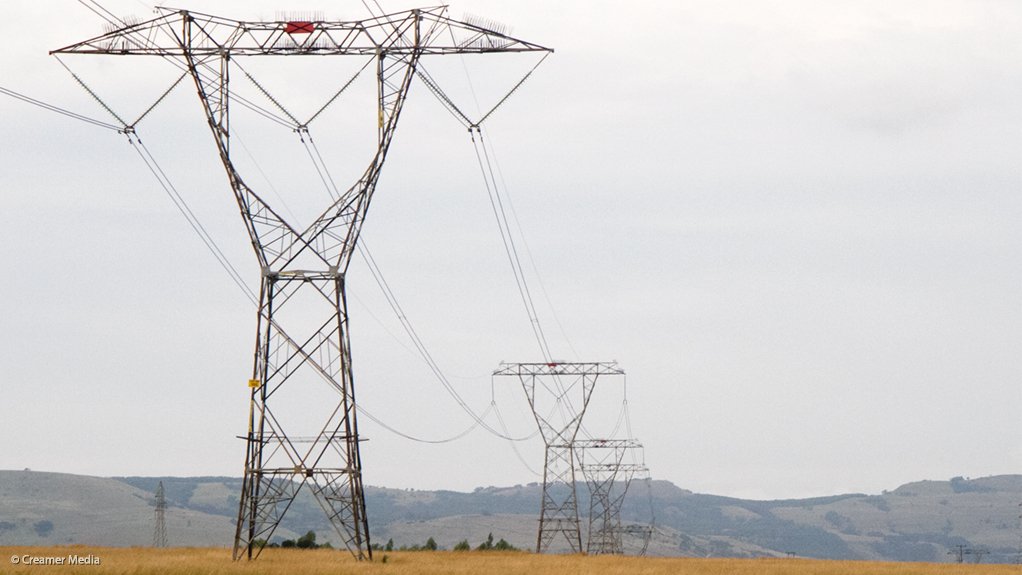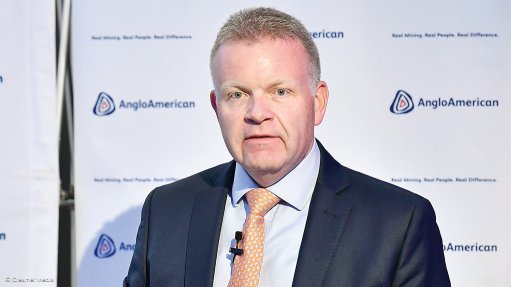Climate commission recommends grid public–private partnerships to speed up just energy transition


Grid capacity is a national priority to solve, the PCC argued
Photo by Creamer Media
The Presidential Climate Commission (PCC) is recommending that alternative investment models, including public-private partnerships (PPPs), be explored to expand and strengthen South Africa’s electricity grid “at speed and scale”, given the centrality of the grid to unlocking the energy transition, as well as the just components of the transition.
However, it also stresses that there is no intention to privatise the National Transmission Company of South Africa (NTC), which is in the process of being established as a separate entity under Eskom Holdings.
Instead, the proposal is that the private sector help finance, build and operate new grid infrastructure under the ownership and control of the NTC.
“Grid capacity is a national priority to solve, not only for our transition needs, but also for our short-term emergency to solve loadshedding,” the PCC says in ‘A Critical Appraisal of South Africa’s Just Energy Transition Investment Plan’, or JET-IP.
The report, which has been drafted following three months of intensive public consultation with labour, business and community stakeholders, argues that the grid should be the key focus of the JET-IP in the coming five years and that the implementation plan should be fully aligned with Eskom’s Transmission Development Plan, or TDP.
The JET-IP implementation plan is currently being finalised and is expected to be published soon, drawing on the recommendations arising from the consultation process, during which stakeholders also agreed that the just elements of the plan had been inadequately prioritised and that sections on skills development, economic diversification, mine rehabilitation and worker support should be substantially reviewed, and investments increased.
In addition, the PCC recommends that the electric vehicle and green hydrogen components of the plan be located within a national industrial strategy which sets out fiscal incentives and enabling infrastructure to grow the sectors, rather than to use the JET-IP as a replacement for such policy support.
On the transmission network, the PCC says the JET-IP needs to clearly indicate how the grid expansion will be financed, despite the constraints on public sector funding.
“It may be worth exploring alternative models for new investments in the State-owned transmission grid,” PCC secretariat executive director Dr Crispian Olver said at the report’s release.
The report notes that PPP funding models, with appropriate risk sharing, have been proven effective globally and in Africa and “can be a highly bankable, solid credit investment for the private sector”.
It also notes that the National Treasury called for a PPP transmission development model to be explored urgently in the February Budget.
“Unlocking the national grid at speed and scale is key, in the PCC’s view, to vast swaths of the transition (including many ‘just’ elements), and funding in the implementation plan should be aligned with the National Treasury’s evolving policy, paying particular attention to the need to simplify the public-private partnerships for financing of infrastructure.”
Social Ownership Models
Olver also stressed that the PCC was keen for new social ownership models to be facilitated in the generation sector, as new renewable energy, battery storage and other peaking capacity was introduced.
He said that various stakeholders, but especially labour, were concerned about the dominant role of the private sector in the evolving electricity supply industry and that alternative ownership models should also be “nursed” under the JET-IP.
The report notes that, while the JET-IP flags the importance of energy affordability for development, it says very little about how this will be secured through social ownership models, notwithstanding the opportunity that will be created by the PCC’s estimate that between 50 GW and 60 GW of new renewables will be required by 2030 to stabilise South Africa’s electricity supply.
“[It] is important to consider how the JET-IP could better address the ownership balance in the context of institutional constraints in terms of electricity generation, financing, and a lack of transparency.”
The PCC acknowledges that social forms of ownership are unlikely to match the scale of private investment in the coming five to ten years.
“Nevertheless, even if relatively small, the coming five-year window should see some increased focus in an implementation plan that allows nongovernmental organisations and unions to work to deliver this – while government creates a conducive environment for the creation, operation and funding of wider ownership models.”
Meanwhile, Olver was relatively sanguine about the ability of South Africa to meet its decarbonisation commitments, despite the likelihood of the coal decommissioning schedule being revised in light of intense loadshedding and the low prospect of alternative capacity being added in time to close the supply gap.
He indicated that the poor performance of the coal fleet meant that South Africa was already in line with the decarbonisation trajectory outlined in its Nationally Determined Contribution and that delaying the dead-stop date of certain units was, thus, almost immaterial.
That said, the least-cost solution for South Africa would be to close the coal units in line with their dead-stop dates, as it was extremely expensive to extend their life further.
In addition, once South Africa added sufficient new renewables, storage and peaking capacity, Olver believes there might be potential to “opportunistically” close more expensive coal units down ahead of their official decommissioning dates.
That said, the PCC was eschewing any notion of accelerated decommissioning, particularly in light of the current supply crisis.
Comments
Press Office
Announcements
What's On
Subscribe to improve your user experience...
Option 1 (equivalent of R125 a month):
Receive a weekly copy of Creamer Media's Engineering News & Mining Weekly magazine
(print copy for those in South Africa and e-magazine for those outside of South Africa)
Receive daily email newsletters
Access to full search results
Access archive of magazine back copies
Access to Projects in Progress
Access to ONE Research Report of your choice in PDF format
Option 2 (equivalent of R375 a month):
All benefits from Option 1
PLUS
Access to Creamer Media's Research Channel Africa for ALL Research Reports, in PDF format, on various industrial and mining sectors
including Electricity; Water; Energy Transition; Hydrogen; Roads, Rail and Ports; Coal; Gold; Platinum; Battery Metals; etc.
Already a subscriber?
Forgotten your password?
Receive weekly copy of Creamer Media's Engineering News & Mining Weekly magazine (print copy for those in South Africa and e-magazine for those outside of South Africa)
➕
Recieve daily email newsletters
➕
Access to full search results
➕
Access archive of magazine back copies
➕
Access to Projects in Progress
➕
Access to ONE Research Report of your choice in PDF format
RESEARCH CHANNEL AFRICA
R4500 (equivalent of R375 a month)
SUBSCRIBEAll benefits from Option 1
➕
Access to Creamer Media's Research Channel Africa for ALL Research Reports on various industrial and mining sectors, in PDF format, including on:
Electricity
➕
Water
➕
Energy Transition
➕
Hydrogen
➕
Roads, Rail and Ports
➕
Coal
➕
Gold
➕
Platinum
➕
Battery Metals
➕
etc.
Receive all benefits from Option 1 or Option 2 delivered to numerous people at your company
➕
Multiple User names and Passwords for simultaneous log-ins
➕
Intranet integration access to all in your organisation



















